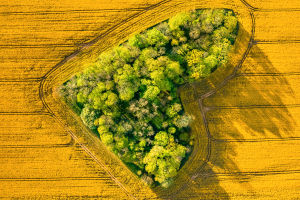Fungi are a diverse group of low-level heterotrophs, composed of eukaryotic cells that lack chlorophyll and are unable to carry out photosynthesis.
Fungi share certain characteristics with algal plants. Both lack differentiation of roots stems, and leaves in their plant body, possess single-cell reproductive organs, and do not develop embryos from zygotes.
However, the main point of divergence between fungi and algae lies in their lack of chlorophyll. Fungi acquire their nutrition heterotrophically, with some being saprophytic and others parasitic.
Common examples of fungi include mushrooms, yeasts, and molds. Fungi play a vital role in decomposing dead organic matter within the soil, facilitating the breakdown of biowaste.
Without fungi, the degradation of organic matter would be significantly slower, hindering the reuse of next-generation organic materials. Despite their plant-like appearance, fungi are actually more closely related to animals. The scientific study of mushrooms is known as mycology.
Mushrooms, a type of fungus, possess rich nutritional value and offer various medicinal effects. They typically grow underground or on trees and are rooted in mycelium. Mushrooms come in diverse shapes, colors, and flavors, making them suitable for culinary, medicinal, and research purposes.
Fungi tend to form filamentous structures called mycelia and can reproduce through sexual or asexual means, often by releasing spores.
The decomposition of complex organisms into simple inorganic substances is a unique capability of fungi. Green plants rely on the absorption of inorganic substances as nutrients for their survival.
The decomposition carried out by fungi plays a crucial role in the natural material cycle and provides nutrition for green plants. Fungi reproduce through three different modes: vegetative reproduction, asexual reproduction, and sexual reproduction.
Fungi demonstrate remarkable adaptability to various environmental conditions, allowing them to thrive and reproduce in soil, water, air, and on plants and animals. Some fungi are even capable of surviving in extreme environments characterized by high temperatures, low temperatures, high salinity, or high pressure.
Human beings have been utilizing fungi for a long time. For instance, yeast is commonly employed in the fermentation of steamed buns and bread. Many mushroom species are highly regarded as culinary delicacies. The distinctive taste and color of cheese are also attributed to the use of fungi.
Fungi represent one of the most diverse groups of organisms on Earth, estimated to encompass millions of different species. However, our knowledge about the vast majority of these fungi remains limited. An in-depth exploration of fungal diversity is essential for comprehending their biological properties and ecological functions.
Fungi can establish symbiotic relationships with other organisms. For instance, fungi form a mycorrhizal symbiosis with plant roots, in which the fungi provide water and nutrients to the plants while receiving a carbon source in return. This symbiotic association is vital for the growth and adaptation of numerous plant species to their environment.
Fungi play critical roles in Earth's ecosystems, participating in processes such as soil formation, organic matter decomposition, and nutrient cycling. They contribute significantly to maintaining ecological balance and biodiversity stability.


